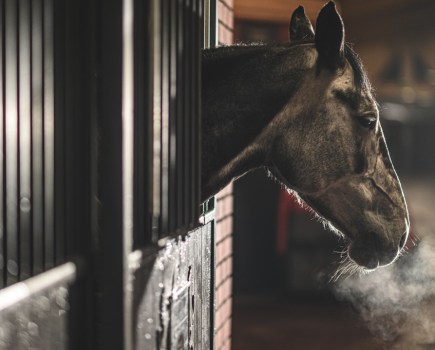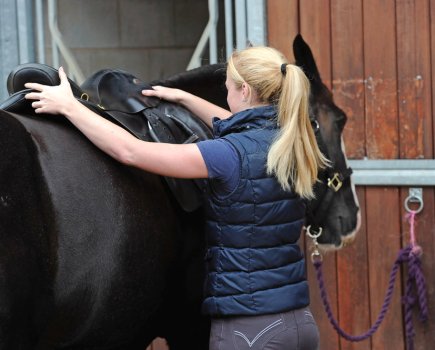In partnership with SPILLERS™
Many owners dream of breeding from their favourite mare or purchasing a foal but if that dream is about to become a reality, the prospect of feeding a pregnant mare and managing the horse’s diet may seem daunting.
Do pregnant mares need to ‘eat for two’? And if your mare, foal or yearling is a good doer, how can you provide essential nutrients without promoting excess weight gain or unwanted growth spurts?
The dangers of obesity
Equine obesity comes with a host of health and welfare risks for any adult horse, but it has additional consequences for pregnant and lactating mares, foals and yearlings. These include:
- Obesity in a mare can lead to altered oestrous cycles and may be associated with dermatitis and oedema (fluid build up that leads to swelling) of the genitals and mammary glands.
- Obesity may affect fertility in mares (and stallions).
- Excess mammary fat may lead to reduced milk production in mares and, in turn, reduced growth rates and/or compensatory growth post weaning.
- Foals born to obese mares may show an increase in low grade inflammation, reduced insulin sensitivity and be at an increased risk of developing osteochondrosis dissecans (OCD) as yearlings. OCD is a form of developmental orthopaedic disease.
- Oversupplying calories increases the risk of excess weight gain, unwanted growth spurts and developmental orthopaedic disease (DOD) in foals and youngstock.
Energy (calorie) requirements
The energy or ‘calorie’ requirements of a mare who is pregnant or lactating increase by approximately 30% in the final month of gestation and a whopping 90% in early lactation. However, individual requirements vary, not only for mares but for foals and yearlings too.
It’s also important to remember that an increase in energy requirements doesn’t necessarily warrant a significant increase in bucket feed. A 250kg pony turned out on pasture 24/7 may consume twice the published energy requirement for early lactation from grass alone!
The best practical advice is to feed the mare or foal in front of you. Stud balancers are ideal for those that do not require the high level of calories provided by traditional stud feeds.
Feeding a pregnant mare: balancers
While good doers may need little in the way of additional calories, forage-only diets may fall short of key nutrients, such as copper, zinc, selenium, vitamin E and amino acids, when feeding a pregnant mare. These key nutrients are the building blocks of protein, the profile of which relative to requirements determines protein quality.
A balanced diet is key to supporting growth and development of foal. For example:
- Essential amino acids lysine and threonine are of particular importance in foals and growing horses.
- Lysine is also key to foetal development and milk production.
- Copper and zinc are essential for bone health/development.
- Milk contains very little copper and zinc, so foals rely primarily on what is stored in their liver for the first 4-6 weeks. This means appropriate supplementation in the pregnant mare during late gestation is key.
- Vitamin E is key to supporting immune and muscle health.
Feed balancers are designed to provide a concentrated supply of vitamins, minerals and amino acids. Stud balancers are specifically formulated to meet the increased requirements of pregnant and lactating mares, foals and yearlings.
Although the feeding rate for stud balancers is higher than ‘regular’ balancers (due to high level of amino acids required for foetal development, lactation and growth), they are still significantly lower in calories than traditional stud feeds per daily serving.
Feeding a pregnant mare or youngster: top tips
- Unless the mare has a foal at foot, changes in diet are generally unnecessary in the first seven months of gestation, provided she continues to maintain a healthy body condition and is receiving a balanced diet. Gradually introduce a suitable stud feed/balancer in month eight and continue to feed it throughout gestation and lactation.
- Foals require some supplementary feed at six weeks of age and should be well established on a suitable balancer or compound feed by three months of age.
- Youngstock can generally be transitioned to a feed/balancer for adult horses from two years of age.
- Remember, balancers are ideal for those that do not require the calories provided by traditional stud feeds.
For friendly advice on managing your mare, foal or youngstock, please contact the SPILLERS Care-Line on 01908 226626.
![]() Have you heard about Your Horse’s #FitNotFat campaign? Equine obesity is an enormous welfare problem and we’re on a mission to provide owners and riders with the knowledge, skills and information you need to keep your horse in tip-top health. It could be life saving! Find out more
Have you heard about Your Horse’s #FitNotFat campaign? Equine obesity is an enormous welfare problem and we’re on a mission to provide owners and riders with the knowledge, skills and information you need to keep your horse in tip-top health. It could be life saving! Find out more







